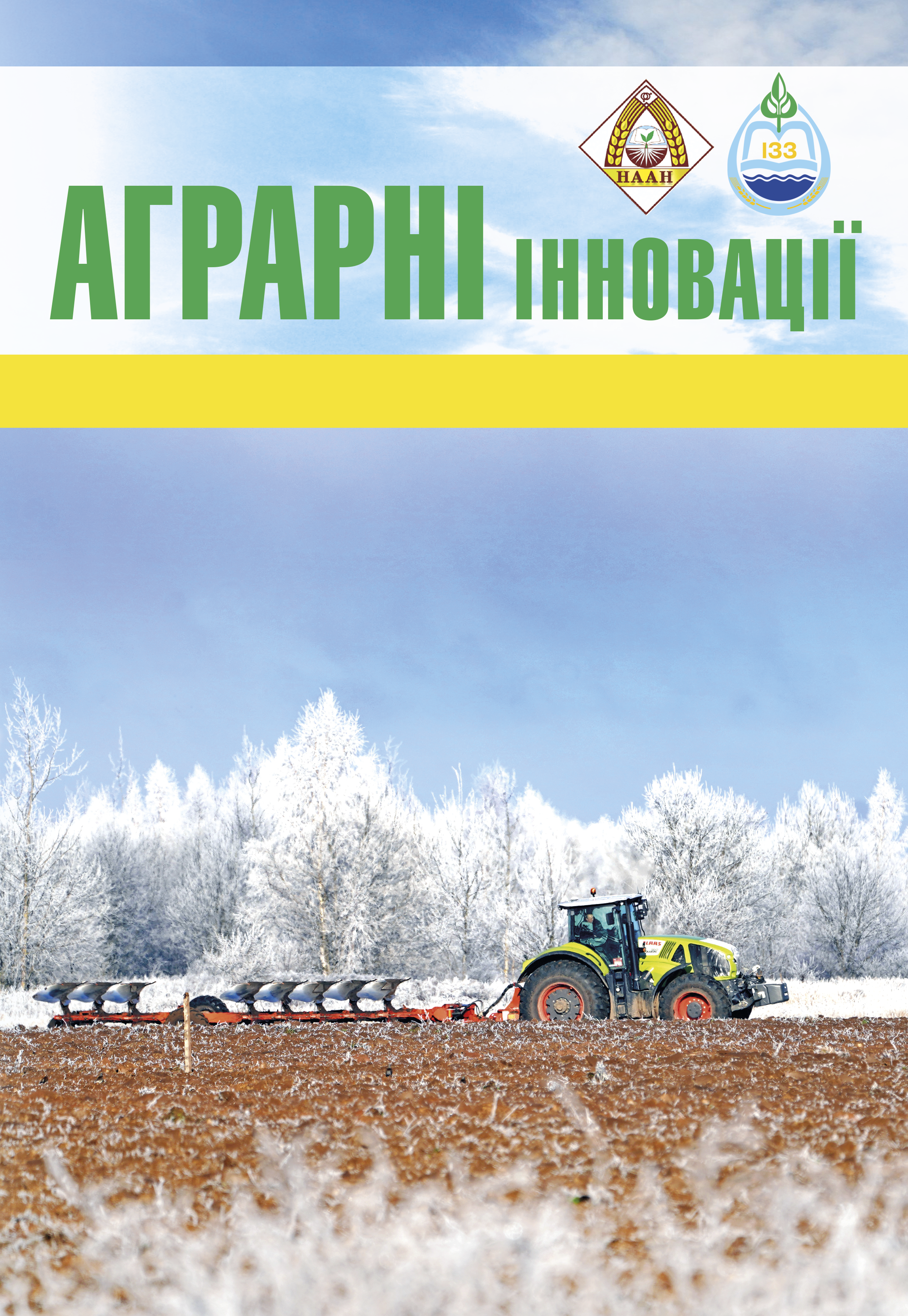Moisture content of corn seeds – technological significance and methods of determination
Abstract
Purpose. To research and establish methods for determining the moisture content of corn hybrid seeds, taking into account their physical, mechanical and hygroscopic properties, to improve the current method introduced by the rules of the State Technical University. Methods. Field, statistical (statistical processing of research results), comparative and calculation. Results. The peculiarities of determining the moisture content of seeds from corn cobs in a wet state were studied. Each cob is broken in two, the required number of seeds is extracted from the place of the break. With this technique, the seed is not damaged, it is preserved whole, in contrast to the extraction of seeds along the length of the cob, as is usually recommended and leads to incomplete extraction, and therefore inaccuracy in moisture analysis. The new method of seed selection corresponds to the peculiarities of their drying within the cob of corn. In our experiments, the moisture content of the middle part of the cob differed from the typical one within 0.6–1.2%, which is quite satisfactory for such an analysis. A significant diversity of seed quality was established in terms of its moisture content within one cob and in the ripening process. As it matured, the ratio changed significantly, in the phase of full ripeness, the seed from the top of the cob was the driest, its moisture content was lower, by 4.8–12.4% compared to the middle and lower parts. At the same time, it should be added that the selection of the weight of seeds from the middle part of the cob is relatively easy in all phases of ripeness, even in the case of high harvesting humidity. Determination of moisture content of corn seeds from cobs should be carried out directly on the day of their selection, this increases the accuracy and objectivity of the analysis. In the case of postponing the analysis period, wet cobs must be stored under cooling conditions and packed in moisture-proof material. In this case, the cobs should be cooled open, and packed after cooling. In the opposite case, according to our observations, moisture condensation occurs in the package, which affects the result of analyzing the moisture content of seeds. Determination of moisture content of corn seeds was carried out by two thermostatic methods, which have different methods of analysis. A comparison of both moisture determination methods was carried out on the example of seeds of corn hybrids, which had different endosperm consistency – tooth-like and siliceous-tooth-like. It was found that the methods lead to different results in terms of humidity. The difference between both methods was within 0.9–1.1%, which is quite significant and is confirmed by mathematical processing of the results for reliability. Therefore, according to the current method of DSTU 4138 and exposure to drying for 40 minutes, moisture removal from seeds may be incomplete and lead to inaccuracy of the analysis. That is, the current method needs correction in terms of increasing the exposure to 60 minutes. The influence of the duration of grinding the weight (for 30 and 60 s) in the process of analyzing the moisture content of the seeds, depending on the botanical type, was studied. For tooth-shaped seeds, reducing the exposure by 2 times did not significantly and demonstrably affect the result of the analysis; for siliceous-tooth-shaped reduction, it led to incomplete removal of moisture, that is, to an inaccurate result. A comparative analysis of two methods was carried out: thermostatic, with the involvement of a Binder drying cabinet; express, with the help of a WILE 50 hygrometer. The methods of the methods are regulated by the state standard DSTU 4138 and the instructions of the device manufacturer [10]. In each phase of ripeness, three selections of cobs were carried out, and seeds were isolated from them according to a single method. In the case of express analysis, it turned out to be close to the arbitration in the humidity range of 34.0–20.2%. According to other selection dates, a different dependence is formed, in particular, both for seeds with increased moisture and in a dry state. Conclusions. The procedure for seed selection from corn cobs, in particular, from its middle part, which contains the typical moisture content, has been researched and developed, and conditions for storing cobs for analysis have been determined. Proposed corrections to the current thermostatic method of analyzing the moisture content of corn seeds in relation to grinding the samples and increasing the drying exposure to 60 minutes. A comparison of the thermostatic method of determining the moisture content of corn seeds with the express moisture meter WILE 50 was carried out, practically, the same results are obtained between them at the harvesting moisture content of 34–20%.
References
2. Данильчук П. В. Довідник по зберіганню зерна Україна. Київ: Урожай, 1988. С. 4–86.
3. Макрушин М. М. Насінництво. Сімферополь: ВД АРІАЛ, 2012. 422 с.
4. Seed Ecology: Proceedings of the Nineteenth Easter School in Agricultural Science. W. Heydecker (ed). University Park The Pennsylvania State University, 1973. 578 р.
5. Стюрко М. О. Особливості формування схожості насіння кукурудзи. Бюлетень Інституту сільського господарства степової зони НААН України. Дніпропетровськ, 2012. № 3. С. 117–120.
6. Кирпа М. Я., Стюрко М. О. Термостійкість та схожість насіння гібридів кукурудзи залежно від режимів їх сушіння. Селекція і насінництво. Харків, 2014. Вип. 106. С. 127–133.
7. Кирпа М. Я., Філіпкова Н. С. Способи післязбиральної обробки гібридів кукурудзи та їх вплив на якість насіння при тривалому зберіганні. Зернові культури. Дніпро, 2022. Том 6. № 1. С. 57–63.
8. ДСТУ 2240. Насіння сільськогосподарських культур. Сортові та посівні якості (технічні умови). [Чинний від 1993-01-01]. Київ: Держстандарт України, 1994. 75 с.
9. Кобець А. С. Машини і обладнання для зберігання та комплексної обробки зерна Україна. Дніпропетровськ: ДДАЕУ. 2014. 614 с.
10. Лабораторне обладнання для підприємств зернової промисловості. URL: http://www.VentaLab.com.ua






